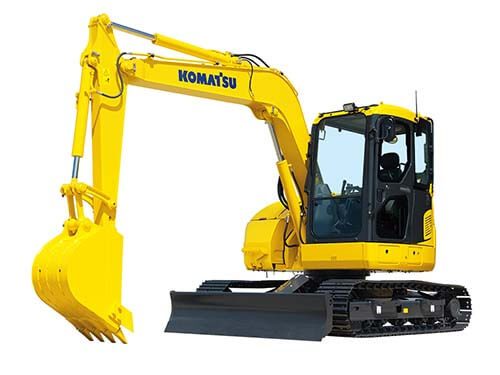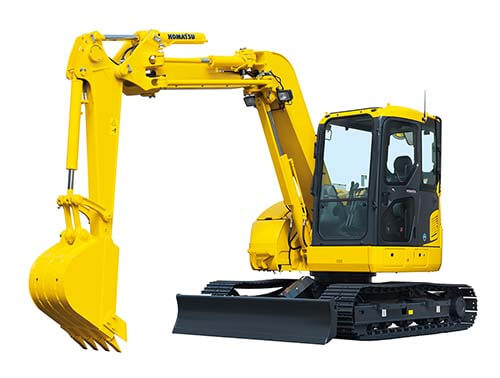2010
As use of ICT for construction equipment became more common, things like crewless dump trucks, IT execution, and KOMTRAX were further developed. Hybrid equipment that decreased both fuel consumption and carbon dioxide emission was introduced and marked a new generation of construction machines.


Compliant with the 2014 Standards for Large and Small Special Vehicles, Etc. of Emissions From Non-road Special Motor Vehicles. Achieved high levels in both productivity and fuel efficiency, and further reduced fuel consumption through the further advancement of Total Vehicle Control, which optimally controls the main unit of the equipment.
In addition to preventing sudden malfunctions through the new addition of a functionality to inspect the lever-neutrality on the work machine, reduces the risk of machinery theft by adopting ID keys and improving safety.The machine monitors are now outfitted with clear and easy-to-read, high-definition 7-inch LCD monitors, and displaying “Eco-Friendly Guidelines, etc.” to provide assistance in energy-saving operations.
Weight: 7400kg (PC78US-10)
Bucket capacity: 0.28m3 (PC78US-10)
Hydraulic excavator
Since its first emergence in 1951, it took only 50 years for the hydraulic shovel to establish its primary position on construction sites worldwide. Its size ranges from mini to super size depending on the scale of construction, and during the half century, it kept evolving by achieving a minimum rear-swing radius and adapting styles that would work with characteristics of each site. Mirroring the movement of a human hand, a hydraulic shovel will continue to evolve during the 21st century.